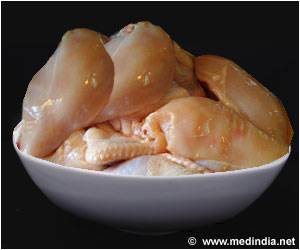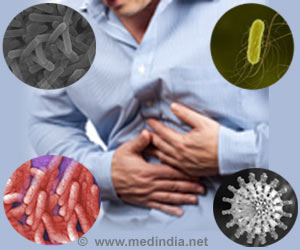A new study recently found how a protein in Salmonella manages to deactivate mast cells, which play an important role in fighting pathogens and preventing spread of bacteria

"Ever since mast cells were discovered to be critical mobilizers of the body's powerful immune system, it has always been suspected that certain pathogens would have evolved mechanisms directed at undermining this cell," said senior study author Soman N. Abraham, Ph.D., professor of pathology, immunology, and molecular genetics and microbiology at Duke Medicine and professor of emerging infectious diseases at Duke-NUS.
Salmonella bacteria are a leading cause of foodborne illness. According to the CDC, approximately 42,000 cases of Salmonella infection are reported each year in the United States, but since many mild cases are not diagnosed, the number is likely much higher. Often transmitted through contaminated eggs, meat, raw fruits and vegetables, a 2012 Salmonella outbreak linked to cantaloupe sickened hundreds of people across 24 states.
While most individuals infected with Salmonella recover quickly, the infection can cause serious illness or even death, particularly among those with weakened immune systems. Salmonella is also becoming increasingly resistant to antibiotic treatment, leading researchers to develop vaccines to try and prevent the bacterial infection.
Studies have shown that Salmonella can rapidly invade the body's cells and hinder the immune system from mounting responses against future infections by impeding the actions of specific immune cells or targeting the lymph nodes. The rapid spread of Salmonella after breeching the gut barrier, however, suggests a more immediate mechanism for subverting the immune system.
An important component of the immune system is the mast cell, a distinct type of immune cell that initiates an early response to combat and clear invading pathogens. Mast cells are located in large numbers in the skin, gut, lung and bladder lining, which are common sites for pathogens to enter and attack the body.
Advertisement
To learn how Salmonella handicaps mast cells, Abraham and his colleagues studied Salmonella infection in mice. They found that when mice were exposed to Salmonella via injection or oral administration, a protein called Salmonella protein tyrosine phosphatase (SptP) shut down the mast cells' ability to release chemical signals without impacting other cellular functions.
Advertisement
In another experiment, the researchers administered SptP to mice infected with E. coli, a relatively innocuous type of bacteria. With SptP suppressing the mast cells, E. coli was able to spread inside the mouse just as quickly as Salmonella, suggesting that inactivating mast cells is a key determinant in the spread of pathogens. The researchers also found that Yersinia pestis, the pathogen responsible for plague, expressed an SptP-like protein that also suppressed mast cells. They now think that the spread of plague bacteria in the body may also involve mast cell suppression.
By pinpointing SptP as the mechanism that inactivates mast cells in Salmonella infection allowing for bacterial spread in the body, Abraham said the researchers can apply their findings to seek out better preventive and treatment options for this significant public health concern.
"The current vaccines against Salmonella are largely ineffective and short lived," Abraham said. "Our discovery of the virulent properties of SptP raises the possibility of using this information to evoke effective and long-lived protection against Salmonella infection."
Source-Eurekalert














